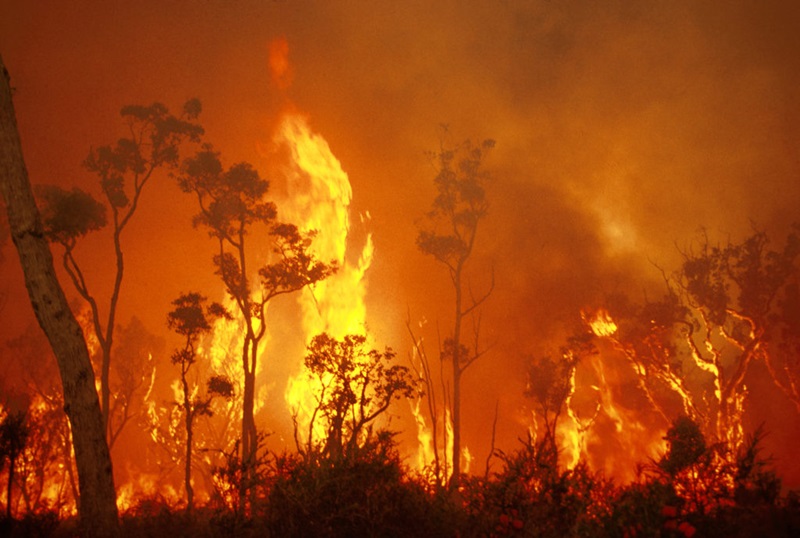Understanding Bushfire Readiness: The Duty of a BAL Assessment in Risk Reduction
The Significance of Bushfire Management in Fire Protection
In the realm of fire protection, the relevance of reliable bushfire monitoring can not be underrated. As areas globally face increasing circumstances of wildfires, the aggressive strategy to avoid and alleviating these all-natural calamities with tactical bushfire management approaches has actually become a vital aspect. Beyond the immediate danger to human life and home, the interplay between bushfire management and eco-friendly conservation, neighborhood involvement, and environment modification postures intricate difficulties that demand comprehensive remedies.
Value of Proactive Bushfire Prevention
Proactive bushfire avoidance strategies are necessary in mitigating the devastating effects of wildfires on areas and communities. One vital aspect of aggressive bushfire avoidance is fuel administration.
Educating the public on fire safety and security practices and advertising area understanding about the relevance of bushfire avoidance are crucial elements of proactive approaches. Eventually, proactive bushfire prevention plays a significant function in securing neighborhoods and environments from the devastating influences of wildfires.
Role of Area Interaction in Fire Protection
Engaging the area in fire security initiatives is indispensable to enhancing the efficiency of positive bushfire avoidance techniques. Area engagement plays an essential role in cultivating a cumulative understanding of the risks postured by bushfires and the significance of preparedness procedures. By entailing regional homeowners, authorities can disseminate crucial information ablaze safety methods, discharge procedures, and very early warning systems, empowering individuals to take proactive actions to guard their residential properties and lives.
In addition, community interaction efforts aid develop durability within communities, promoting a feeling of unity and shared duty in mitigating fire threats. Through workshops, training sessions, and neighborhood occasions, residents can learn exactly how to create defensible areas around their homes, lower fire gas loads, and determine prospective risks. By fostering a culture of preparedness and partnership, neighborhoods can reinforce their capability to react efficiently to bushfire emergencies, lessening the influence on properties and lives. Inevitably, area involvement is a cornerstone of extensive fire security techniques, emphasizing the importance of collective action in securing susceptible areas from the risk of bushfires.
Significance of Wild Animals Preservation in Bushfire Administration
Conservation of wild animals plays a critical function in effective bushfire management strategies, ensuring the security of diverse ecosystems and biodiversity in fire-prone areas. Wildlife preservation is crucial as it adds to the total resilience of communities, helping in their ability to recover and endure from the influence of bushfires. By preserving environments and safeguarding numerous species, the natural equilibrium within these ecological communities is maintained, which is essential for their long-lasting wellness and sustainability.
Furthermore, wildlife preservation additionally helps in minimizing the risk and strength of bushfires. Healthy environments with unspoiled wildlife populations can act as all-natural firebreaks, decreasing the spread of fires and restricting their damaging possibility (BMP). Certain animal types, like delving pets or try this out birds that spread seeds, play distinct functions in aiding or stopping fires in the post-fire regrowth of environments
Incorporating wild animals conservation into bushfire monitoring strategies is not only necessary for guarding biodiversity but additionally for promoting the total health and wellness and durability of ecological communities in the face of raising fire dangers.
Benefits of Strategic Fuel Reduction Programs
Strategically implementing gas decrease programs is essential in minimizing the threat and effect of bushfires in fire-prone regions. These programs involve regulated burning, mechanical cleaning, and other approaches to minimize the amount of combustible plant life readily available to sustain wildfires. By purposefully minimizing fuel tons in crucial areas, such as near residential communities or vital framework, the strength and spread of bushfires can be substantially reduced.
Among the primary advantages of fuel decrease programs is the enhancement of total fire durability in a community. By producing tactical gas breaks and decreasing the connection of plants, these programs assist to disrupt the path of a bushfire, making it easier for firemens to extinguish the blaze and consist of. In addition, fuel reduction programs can safeguard biodiversity by avoiding exceedingly extreme fires that can devastate environments and endanger wild animals populations.
Moreover, these programs can also protect human lives and building by reducing the threat of catastrophic fires that present a significant danger to areas. Ultimately, critical gas reduction programs play an essential role in aggressive bushfire administration and fostering a much safer atmosphere for both people and nature.
Impact of Climate Modification on Bushfire Threat

Higher temperature levels lead to drier plant life, making it much more susceptible to ignition. Minimized rains in certain areas lengthens drought problems, additionally enhancing the flammability of the landscape. Additionally, the altering environment has modified wind patterns and weather, leading to more unpredictable fire actions and rapid fire spread.
As the climate proceeds to change, the frequency and intensity of bushfires are expected to increase, requiring a adaptive and positive strategy to bushfire monitoring. Methods should advance to make up the changing risk landscape, integrating climate forecasts and considering long-term resilience in fire administration preparation. Addressing the influence of environment adjustment on bushfire threat is important in establishing reliable strategies to safeguard lives, property, and the environment.
Conclusion
To conclude, positive bushfire avoidance, neighborhood interaction, wildlife preservation, calculated gas reduction programs, and factor to consider of environment adjustment are crucial components in efficient fire security. By carrying out these methods, we can better manage bushfire risks and safeguard both human lives and the atmosphere. Bushfire Risk. It is important that stakeholders work with each other to focus on these actions to reduce the disastrous effect of bushfires on neighborhoods our website and environments

As the climate continues to change, the frequency and intensity of bushfires are expected to rise, necessitating a flexible and aggressive method to bushfire administration.In conclusion, proactive bushfire avoidance, neighborhood engagement, wild animals conservation, critical gas reduction programs, and consideration of environment modification are essential components in efficient fire defense.